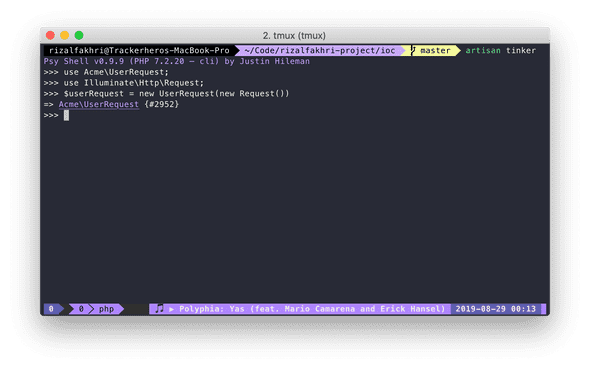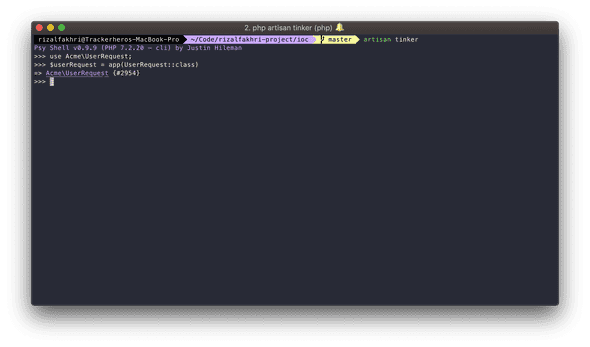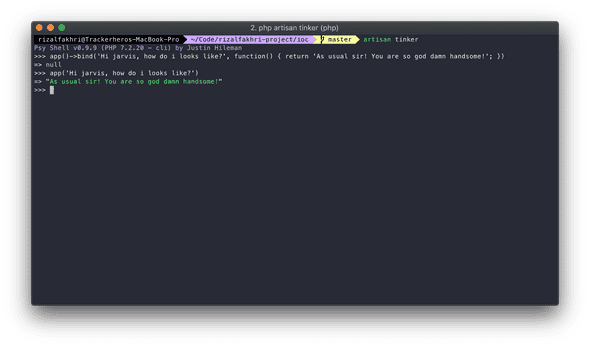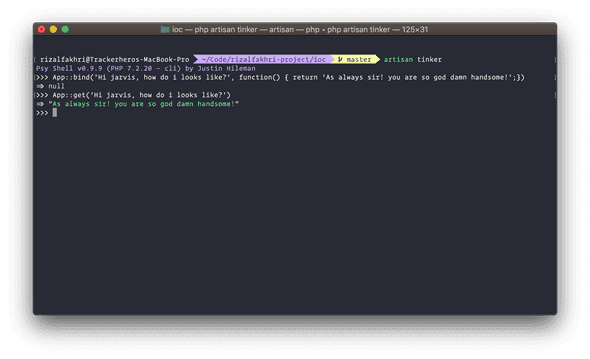Is Laravel Container really a Magic?
August 30, 2019
I saw this on Internet a lots, about how magical Laravel Service Container is, It can automatically resolve your dependencies! How magical is that!
But does it really a magic? Do there any technical explanation about what happen behind the scene?, Yes it does have!
TL;DR
The Laravel Service Container is actually tool for managing
Classdependencies and performing Dependency Injection on Laravel.
If you are familiar enough with dependency injection, You might be already known about injecting dependency on a Class Constructor
<?php
namespace Acme;
use Illuminate\Http\Request;
class UserRequest {
protected $request;
public function __construct(Request $request) {
$this->request = $request;
}
}And the way you instantiating the UserRequest class is by passing the Request class that UserRequest class is needed.
<?php
use Acme\UserRequest;
use Illuminate\Http\Request;
$userRequest = new UserRequest(new Request());And this is what we get when running the code :
We get the UserRequest object as expected, But what happens if the UserRequest class itself requires more than one dependencies?
Like for example it also requires \Illuminate\Http\Response & Acme\Services\AccountService object in case the UserRequest needed to do someting related to accounts?
Do we need to instantiate all of those objects ourselves? And then pass it to the UserRequest?
Nah! We don’t have to, Those dependencies will automatically resolved by Service Container!
Here’s how we instantiate the UserRequest using the Service Container :
<?php
use Acme\UserRequest;
$userRequest = app(UserRequest::class);And below is the result
See? We don’t have to pass any required dependencies in order to instantiate the UserRequest object, And we still get the expected result!
...
Let’s break it down shall we..
Behind the scene, Laravel uses PHP’s Reflection API, To be able to get the class dependencies and give the instance of the dependency back to the constructor.
To interact with the Container, There’s 2 methods called binding & resolve.
Deep down to Binding & Resolve
Binding is the process where you actually register something to the Container, it can be a primitive type such as a string or an integer, a Closure or an Object.
And the Resolve is when you get the instance that you register (bind) to the container before.
You can register something using a pair of key values, Like for example you want to bind a Closure that returns a string. You can use something like this :
<?php
app()->bind('Hi jarvis, how do i looks like?', function() {
return 'As usual sir! You are so god damn handsome!';
});And then you can resolve your instance like this :
<?php
app('Hi jarvis, how do i looks like?');
// RESULT:
// As usual sir! You are so god damn handsome!The magic happen inside the app() method though. That method is where you can interact with the laravel service container.
When you run the app() without any parameters, it will return the Laravel’s \Illuminate\Contracts\Foundation\Application implementor instance.
Those instance is actually the “Laravel”.
If you want to get deep of what those instance can do, You can refer to its API right there.
But here’s the short answer ..
-
You can call the
Containerusing 2 ways.- Using the
app()method. - or Using the
\Illuminate\Support\Facades\AppFacade.
- Using the
You can resolve the registered instances using 2 ways if you using the app() method.
Either directly pass the key as the parameter of the app('key') method, or using the array style app()['key'] since the Container is implement the ArrayAccess interface.
Otherwise you can use the App facade to access the Container, You can use the bind() method of the App facade to bind instances to the container.
App::bind('Hi jarvis, how do i looks like?', function() {
return 'As always sir! You are so god damn handsome!';
});Also you can use get() method to resolve an instance
App::get('Hi jarvis, how do i looks like?');
// RESULT:
// As usual sir! You are so god damn handsome!...
So that’s a basic binding of the Laravel Service Container.
Binding an Interface
Sometimes you need multiple implementations of the interface, For example is when you building a Payment Gateway that accepts multiple Payment Methods.
Let’s say there’s a CreditCardGateway that implements the PaymentGateway interface.
Then you can bind the implementation of the interface using the code below :
$this->app->bind(
Acme\Contracts\PaymentGateway::class,
Acme\Services\Payments\CreditCardGateway::class
);Finally you can type-hint the PaymentGateway interface to resolve the CreditCardGateway instance!
<?php
namespace App\Http\Controllers;
use Acme\Contracts\PaymentGateway;
class PaymentController extends Controller {
protected $paymentGateway;
public function __construct(PaymentGateway $paymentGateway) {
$this->paymentGateway = $paymentGateway;
}
}The paymentGateway property is now the instance of CreditCardGateway!
I still don’t get it lah.. how can i understand it easily?
Well, It deserve another posts! See yah!
This is personal blog by Rizal Fakhri.
Everything written here is my opinion, this is my safe space, you don't get a say, period.



